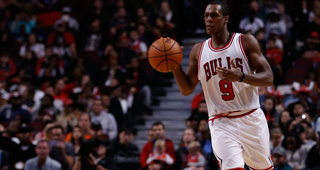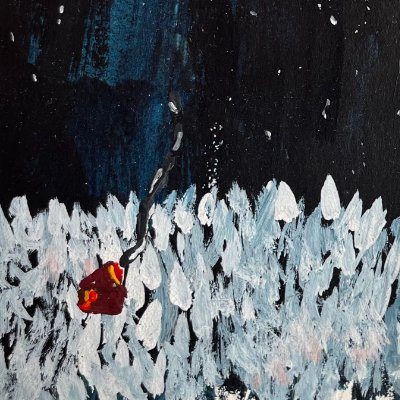When great athletes hang on too long, we get anxious. The deterioration of their games and bodies are sometimes sudden, sometimes gradual, but whether or not there’s an exact point at which they fall off, there’s always a point at which we notice. It strikes us that Kevin Garnett doesn’t have the springs he used to, Albert Pujols is guessing on fastballs, Ed Reed is blowing coverages. The cliché goes that this reminds us of our own mortality, but it’s more specific than that. The most basically satisfying thing about watching sports is a certain sublime bodily sympathy we feel for the athletes. LeBron James dives to the hoop and we dive along with him, so habituated to his movements that we’re a little bit ahead of him, anticipating a familiar result. When he upsets our expectations—when he blows the lay-up or throws a pass to nobody—it’s like biting into an apple that tastes like an onion. It’s wrong. An athlete in decline is this sensation of wrongness visiting you more regularly than we’re comfortable with. And then, in the final and most dispiriting stage, the wrongness becomes normal.
Rajon Rondo partially tore his right ACL in January of 2013. He drove the lane against Jeff Teague, passed out of a layup, came down uncomfortably, and played the next twelve minutes on a leg-and-a-half. His season officially ended a couple weeks later, just shy of his 27th birthday, when it was determined he needed surgery. In retrospect, that was pretty much the end of him.
He played 30 games the next year for a Boston team that had sent Kevin Garnett and Paul Pierce to Brooklyn over the summer. Doc Rivers had left for the Clippers. Rondo didn’t play until late January, and he looked unwieldy and ill-at-ease even though the Celtics had been extra patient to ensure he returned at full strength, but the symptoms at least had some plausible causes: a knee injury is a two-year thing, the roster was significantly different from the one Rondo was used to, and Brad Stevens was a brand new head coach with some unconventional ideas. With an offseason and a full training camp to get himself right, perhaps Rondo would be back to his old self by autumn 2015.
Or perhaps not. He was on his way out of Boston almost immediately after the season started. Stevens has a politician’s knack for spin, but while he was rarely less than breathless in his public praise of Rondo, it was clear that Stevens and his point guard weren’t getting along and Rondo wasn’t playing nearly well enough for the testy relationship to persist. In January, the Celtics shipped him to Dallas, where Rondo singlehandedly torpedoed an entertaining Mavericks team and carved a few canyon-deep wrinkles into Rick Carlisle’s brow. And thus was the unceremonious end of anyone considering Rondo more than a supremely grumpy replacement-level point guard.
We should be experiencing the tail end of Rondo’s prime but instead he’s on his fourth team in as many years, a frowning nomad whose unpleasantness has overcome his usefulness. He led the league in assists last season and it was like watching an actor ham his way through some off-brand Oscar bait. He’s a great passer but everything else has left him. He doesn’t move bodies when he drives because the defense knows he doesn’t want to shoot. He’s an unengaged defender when he’s not gambling for steals. The lacking jumper that kept him from superstardom a half-decade ago is now just another nettlesome blemish on a player who seems not to have any place in the modern, three-happy NBA. There’s buzz that Rondo is already done in Chicago, that Fred Hoiberg doesn’t want to play him and the Bulls are trying to find some team that will eat his two-year, $28 million salary. It’s hard to believe they have any eager trade partners.
In the years after a great athlete retires, our memories often lose the last few seasons of their career. When we talk about Manny Ramirez, we’re talking about him on those World Series-winning Red Sox squads. When we talk about Charles Barkley, we’re talking about his tenure with the Sixers and Suns, not the Rockets. We understand their twilights as less indicative of what they were than their primes. We remark on players who keep on after they’re past their best—Steve Nash’s post-Amar’e years in Phoenix were beautiful in their way—but it takes a punishing, protracted slide into the abyss for us to place much weight on an all-timer’s decline. Tiger Woods has forgotten how to hit a driver for long enough that it’s part of his legacy. Numerous terrific boxers have taken five too many fights and embarrassed themselves.
Rajon Rondo is something less than a great athlete, not because he wasn’t dazzling at his peak but because his peak was sharp and brief. As soon as what was spectacular and unexpected about him—the strange angles he would take to the basket, the brilliant passes that didn’t make sense as he was throwing them, the plays he would make on defense that betrayed a superior grasp of the game—started to become legible to us, his knee popped and he lost most of what made him special. We didn’t spend much time feeling sublime bodily sympathy with him because his body betrayed him too soon.
All that’s left from when he was dominating games in ways that weren’t totally comprehensible is his ego and his rage, and he’s in some sense defined by that. Rondo is as much the guy who debased Bill Kennedy with a homophobic slur as the guy who outplayed LeBron in the 2010 Eastern Conference Semifinals. Such has been the force and longevity of his sourness: it’s difficult to recall when he was bracing and fun. Rondo has been indelibly marred by these post-injury years and the only feeling we have for him is the feeling of wanting him to go away. There’s nothing good ahead of him. From here on out, he’s only making the sort of memories we’d like to forget.



